What is the Right Technology For ‘Safe City’ Video Surveillance?
For modern video technology in public spaces, numerous elements need to be coordinated, and knowledge needs to be built up quickly. There are decisions to be made, approval procedures, public discussion, planning, identifying synergies and, last but not least, selecting the appropriate technology for a city surveillance project. This article intends to provide help with that decision.
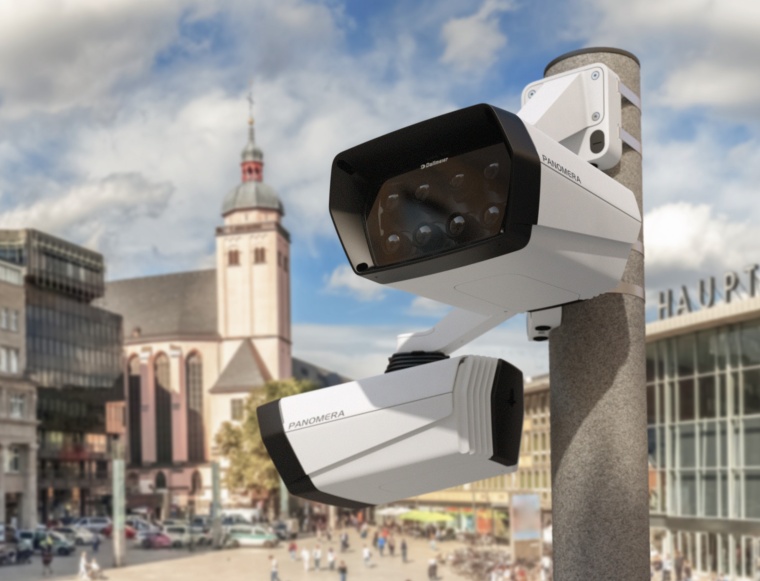
No local politician would wish for a situation like the one that occurred in Cologne on New Year’s Eve 2015. After terrible riots involving several hundred people, more than 1,200 charges were filed for breach of the peace, assault and sexual assault among other things. The fact that there were only 46 court cases and just 33 convictions was due in part to the fact that the image quality of the recordings from the outdated video system did not allow any evidence to be used. Either the perpetrators could not be identified due to a lack of resolution, even if the course of the criminal event was clearly recognizable, or potential perpetrators were easily recognizable, but the small images of many individual cameras often did not allow the events to be reconstructed in larger visual contexts, and it was therefore not possible to prove involvement in the crime beyond doubt.
Image Quality, Overview, Cost
Three key requirements can be derived from these and other experiences gained over many years of video surveillance in public spaces. The first is large-area coverage with minimum image quality that is as consistent as possible across the entire object space. The second point is the recognition of contexts: It should be possible to capture as large a part of the monitored space as possible in one image, or in other words, the number of cameras used should be as small as possible. Finally, the third point is, of course, cost: the two central selection criteria – comprehensive image quality and recognition of large contexts – must be feasible at reasonable overall cost.
What does ‘minimum resolution’ actually mean and how is it relevant? How is image quality actually defined when monitoring large areas? The decisive factor for quality is the required resolution. This is referred to as ‘resolution density’ or ‘pixel density’, which is defined in the DIN EN 62676-4 standard. The unit ‘pixel per meter’ indicates how many pixels are available to represent ‘one meter of reality’. In the field of urban surveillance, but also in sports facilities for example, a resolution density of 250 px/m (‘Identify’ according to DIN EN 62676-4) or more is usually required for the images to be reliably usable in court. In simple terms, this is the value at which a judge can say with a high degree of probability that the person sitting in front of him and the person in the video image are identical, or not. This must be possible even under poor lighting conditions. Since this value must apply across the board and must not fall below a certain minimum value, it is also referred to as the ‘minimum resolution density’.
How Many Cameras Cover How Many Square Meters?
Once this resolution density has been determined for the entire area to be monitored, the camera requirements can be derived through pre-planning in cooperation with the manufacturer. Good planning simulates the entire environment as accurately as possible as a ‘digital twin’ and allows decision-makers to see and evaluate the exact pixel density coverage and camera views for all areas. This assists the planning that ensures both the fulfilment of the purpose of the surveillance – as required by the EU GDPR, for example – as well as efficient operation and maximum cost effectiveness.
So-called multifocal sensor camera systems are particularly suitable to fulfil these requirements. They combine the images from up to seven detail sensors and one overview sensor into one optical unit. The individual images are combined by software to form an overall image and can cover very large areas. This method combines three distinct advantages: a much lower overall camera count that helps to reduce the total cost of ownership because a lot less infrastructure is needed and fewer operators are required to monitor the same area. The second advantage is a better overview: as the image is a combination of up to eight individual images, operators can see the entire scene in a much broader visual context. And thirdly, and very importantly, the entire image is always available in high resolution – both in live view and in the recording. Live operators and forensic analysts can zoom into this overview image indefinitely and view any details in high resolution.
Quality In – Quality Out: City Surveillance and AI
The capabilities – but also the limitations – of video analytics in urban surveillance are manifold and are therefore not the subject of this article. However, one principle that every decision-maker should consider: analysis technology is developing rapidly. It is advisable to stay ‘on the ball’ and watch the developments of the various analysis specialists. When selecting camera systems, pay attention to the highest possible constant image quality over the entire object space. After all, the quality of the analysis results can only ever be as good as the quality of the input data quality. With the right technology, one is then also well equipped for any future analysis applications.
Unfortunately, manufacturers or installers are still very often confronted with the question of ‘cost per camera’ in consulting discussions or tenders. But decision-makers are well advised to consider modern video security systems as whole solutions consisting of various components such as cameras, software, recording systems, services and operation costs. There are significant differences in the efficiency of operation, the infrastructure costs or even the effort required for installation and deployment between the systems that are on the market, due to the nature of video technology.
It is therefore always advisable to take a close look at the total cost (the total cost of ownership), which takes into account all cost aspects of a solution from initial planning all the way through to ongoing operation. Decision-makers should pay particular attention to ensuring that all the elements of a project are considered together.
The invitations to tender for the video system and the construction and infrastructure work are often issued separately. Under certain circumstances, this can lead to a significant distortion of the total costs, for example if cameras are less expensive to purchase but the infrastructure and installation costs required for them are significantly higher than in a comparative bid. This is frequently the case when it comes to mounting points such as masts, cabling, digging or other building activities. Finally, the principle of the most economical and not just the cheapest bid also applies to public tenders. The first project in city surveillance will then also work out well for the city and policy decision-makers – and result in more security for the citizens with maximum cost efficiency.
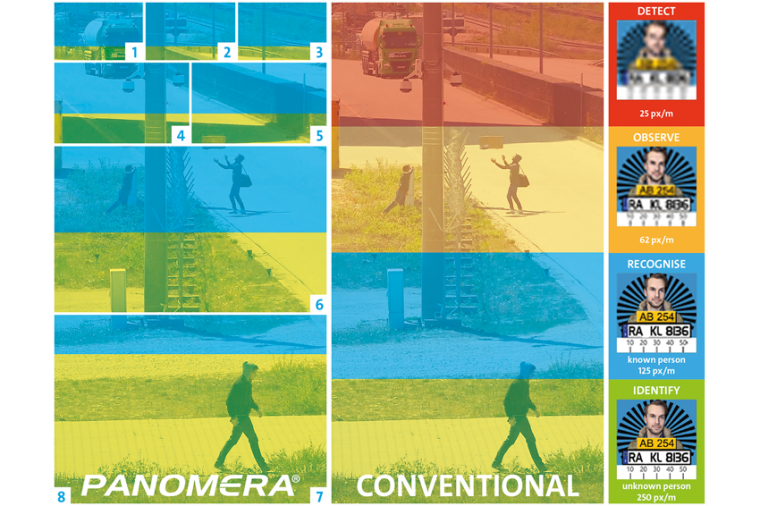
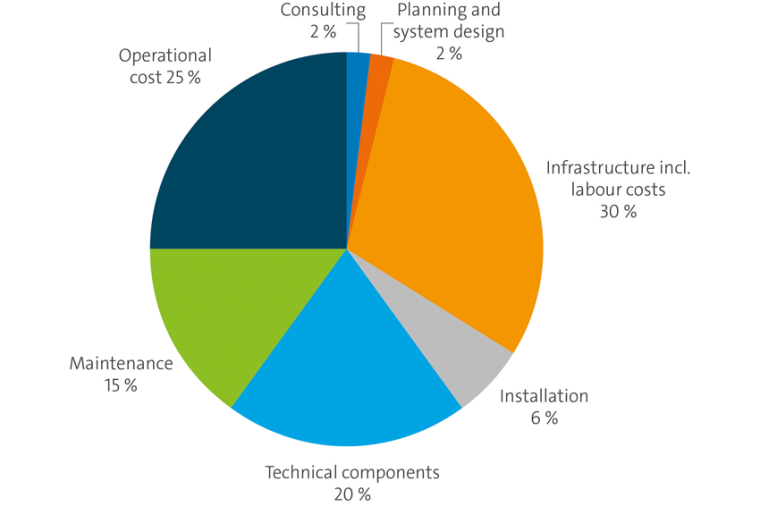
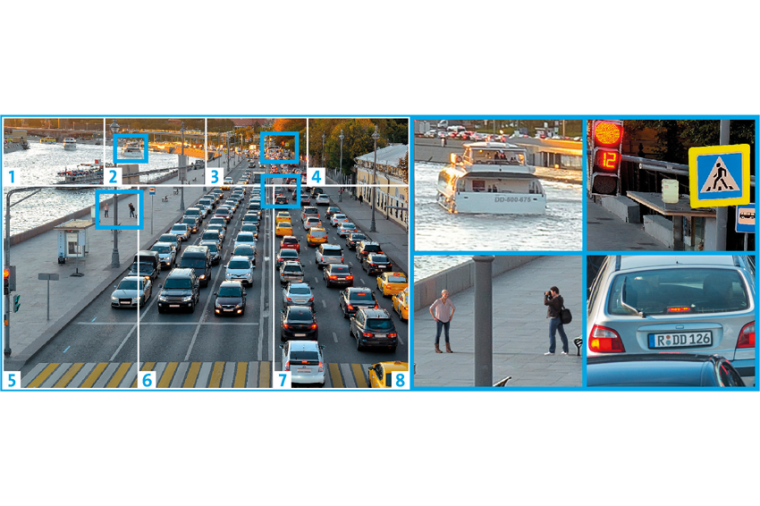
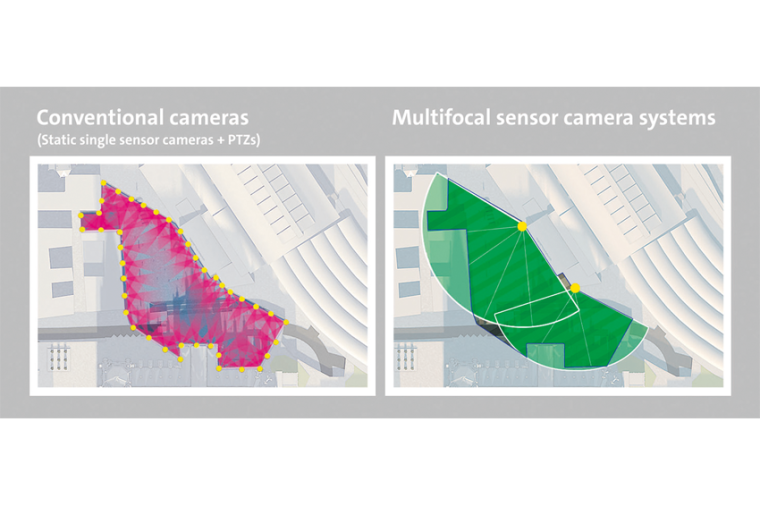
A Checklist of Cost Factors in City Surveillance
When calculating the total cost of a video technology solution, there are many more factors involved than the pure costs for the technical video components cameras, recording and software. Decision-makers would do well to calculate precisely and take into account as many cost drivers as possible.
- Consulting: how time-consuming? Free of charge or already associated with costs?
- The exact image quality requirements: what is the required minimum resolution density and for which areas? 125 px/m? 250 px/m?
- The number of cameras: how many cameras of which type are needed for how many square meters of area?
- The planning: how time-consuming is the planning, and which digital systems will be used? This has a direct impact on the speed of implementation and also on flexibility.
- The costs for infrastructure, including labor costs: are masts, civil engineering, cables, network technology required?
- The cost of installation: the total number of cameras required naturally plays a key role.
- The method of mounting: are there systems that make installation particularly expensive or particularly cheap?
- The configuration documents: to what extent can planning data be used directly during installation on site? Some manufacturers can generate installation documents directly from the plans.
- The cost of the technical components themselves: how much do cameras, recording systems or software components cost?
- The cost of ongoing maintenance: what about warranty, guarantee or ‘all-inclusive’ support contracts?
- The cost of operation: what are the labor costs for operators? How many operators are needed for which solution?
- The cost of unproductivity: how operator-friendly are the solutions? How many camera images does each operator have to keep an eye on (usually a maximum of 6-8 images per operator is reasonable)? Conversely: how many person-hours does the respective solution require for active video observation?
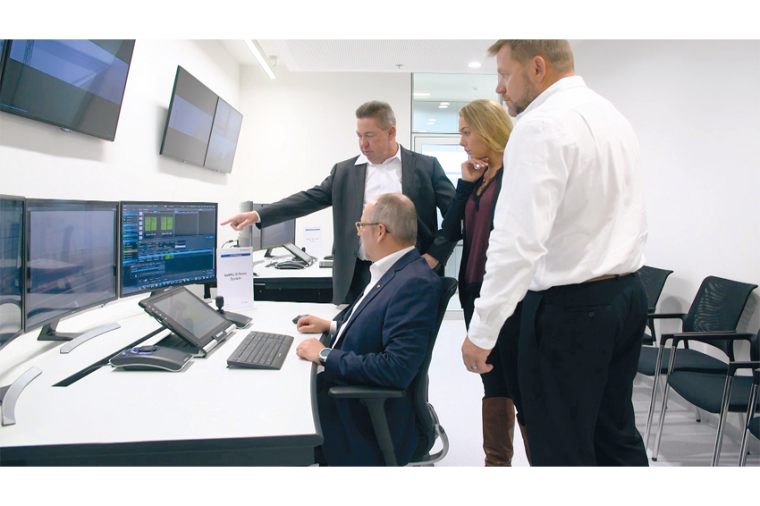
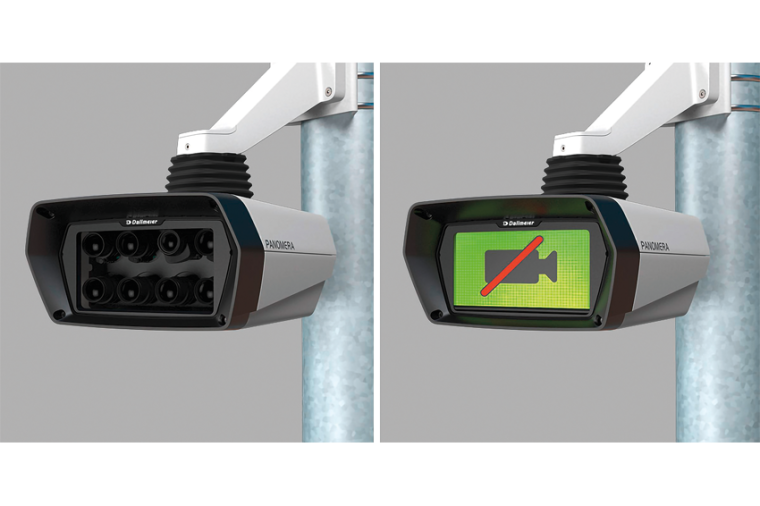
Practical Advice: Thoughts on Privacy
A Beginner’s Mistake: Privacy as the Enemy
In many urban surveillance projects, data protection commissioners are often perceived as ‘opponents’ and are kept out of the decision-making process for too long for fear of possible resistance. However, the opposite is often the case: the earlier the data protection officers are involved – ideally already at the planning stage – the more positive the reaction, and the supposed opponent often becomes a supporter.
Touch a Video System
Categorical rejection is often simply due to uncertainty and a lack of knowledge. If you take people’s interests seriously and inform those involved at an early stage, for example by involving one or more manufacturers, you can increase understanding and transparency. A live demonstration of a test installation of the future system often helps, such as in the city council, at a citizens’ meeting or at an information event.
Special Requirements Demand Special Solutions
In some countries – such as Germany – video surveillance equipment in public places must be visibly disabled for participants at legal rallies. This can be done ‘traditionally’ and elaborately with very high costs involved using cherry pickers and covering cameras with cloth bags, for example. However, there are also remotely controllable solutions that allow the incident commander to visibly deactivate the recording with just a few mouse clicks. And above all, the systems can be reactivated just as quickly if the situation changes.
Further Material:
most read

The Benefits of AI-based Video Surveillance Solutions for Sports Venues
Dallmeier Interview: Artificial intelligence Makes Stadiums Smarter

Security management, building security & perimeter protection: the winners of category E at the GIT SECURITY AWARD 2026
GIT SECURITY AWARD 2026: Security management, building security & perimeter protection - an overview of the most innovative solutions

GIT SECURITY AWARD 2026 - The winners have been announced!
GIT SECURITY AWARD 2026: The best safety and security solutions of the year - now an overview of all winners


Integrated and Futureproof: Traka’s Next Chapter
Interview with Stefni Oliver on Traka’s Vision for the Future










